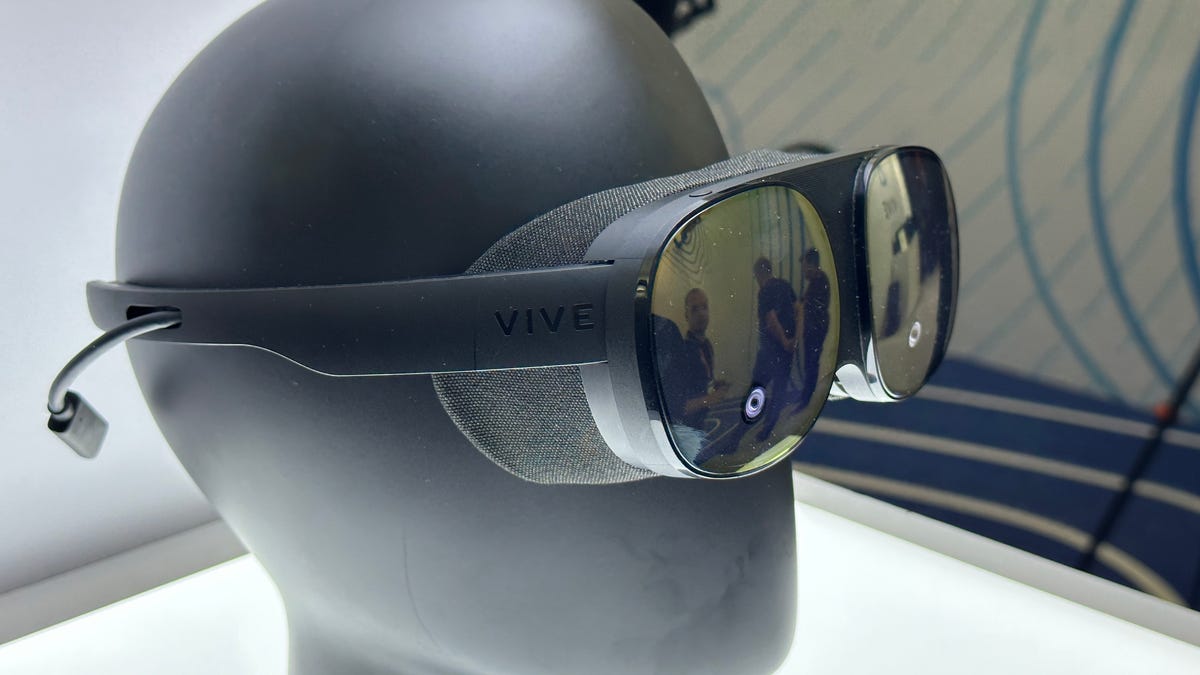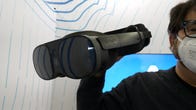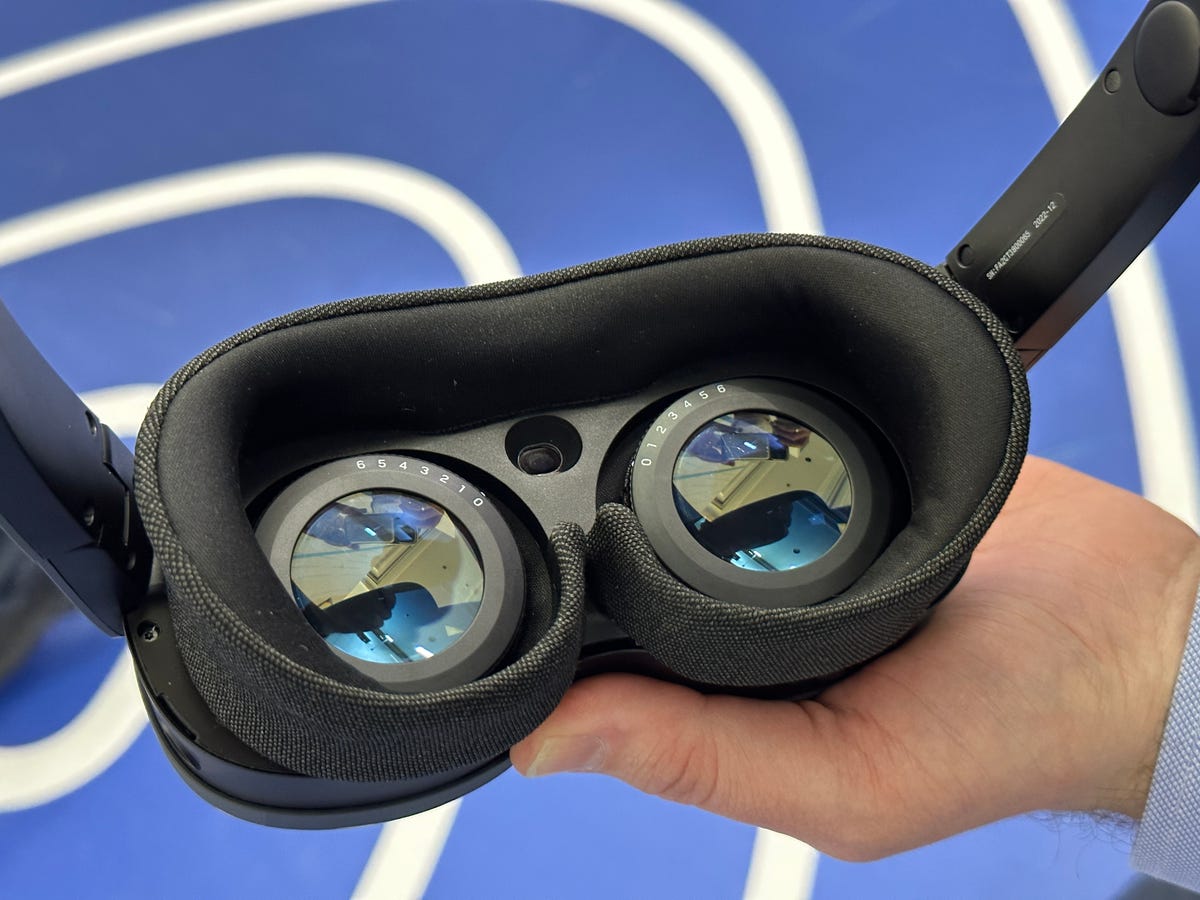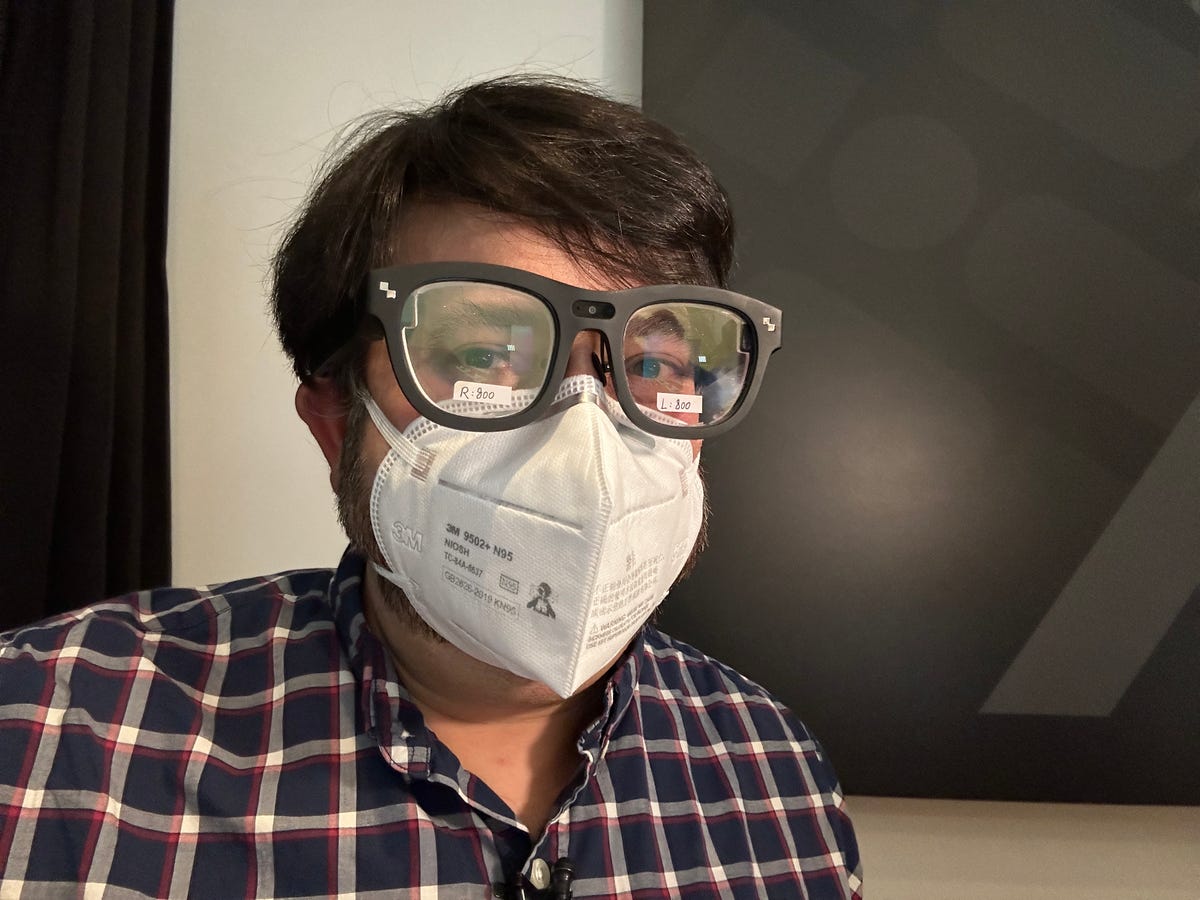
The Vive XR Elite are super-small VR goggles. But their limited prescription support doesn’t work with my vision. It’s a growing trend.
Scott Stein/CNET
I was at HTC’s demo of the new Vive XR Elite headset at the Wynn Hotel in Las Vegas, ready to experience the smallest-looking, mixed reality-capable pair of VR goggles I’ve ever seen. Well, I tried. I was asked to take my glasses off, because — don’t worry, I was told — this hardware has its own prescription adjustment dials inside. I knew what would happen next, because I’ve seen this story happen over and over and over before.
The XR Elite stops at -6. I’m an -8.25. In prescription language, that means my extreme nearsightedness isn’t supported.
So I played blurry VR until I tried cramming my chunky glasses semi-successfully inside… which only made my face hurt.


Watch this:
Super Small Vive XR Elite Doesn’t Quite Work For My Eyes
3:36
Everyone wants to get their big, bulky, weird VR and AR hardware shrunk down to look like regular glasses. There’s one catch to that: If you do it, then they become your glasses now. And if they’re your glasses, they need to work with your prescription.
I’ve tried to crack open this puzzle box of wearable eye gear since Google Glass came on the scene. I have really bad myopia. I like wearing glasses. To test Google Glass way back in 2013, I had to wear contacts.


The inside of the Vive XR Elite: Prescription adjustments allow a wide range of vision to fit… but not wide enough for mine.
Scott Stein/CNET
My eyes are a hard fit for VR and AR
I’ve written about this before, many times in fact. And yet, in the VR era of 2016-22, I was granted a reprieve. VR hardware learned to rest over my glasses, mostly, allowing me to try all sorts of tech (even the HoloLens 2 and Meta Quest Pro) and experience them in sharp focus. Some headsets still support glasses well: the Lynx-R1, a mixed reality headset I just tried, has a simple flip-down visor that was perfect for me and my big glasses. The PlayStation VR 2 is also perfectly designed to accommodate my vision needs, with a large rubberized area I can rest my glasses into.
But I sense a problem coming, at least for me. At CES 2023, I brought a smaller pair of glasses that fit better into VR headsets, but did not bring contact lenses. I didn’t want to put my fingers into my eyes at a flu- and COVID-spreading super show. Would you? I knew things might get weird. And yes, it turns out, many glasses and headsets are turning to prescription inserts now. And most of them cap out at -8, just below what I need.
This happened with Magic Leap 2. It happened with Vuzix. It happened with TCL with their VR headset. Am I going to have to be Contact Lens Guy now?
To be sure, my problem is specific to my extremely bad vision, and it’s happening in demos where proper prescription fits can’t be guaranteed. A future of prescription services for headsets looks like it may be coming fast. Maybe getting the right lenses will be easy. That will still mean, however, that I have to get new lenses for every single headset I wear (a universal fit seems unlikely), and it also means I won’t be able to demo hardware unless they magically have what I need.


Trying TCL’s newest AR glasses in Vegas: They have prescription lenses, but at least in the demo area they didn’t quite fit my own needs. I’m still a bit of an outlier.
Scott Stein/CNET
You might have the same problem
It’s perhaps a bigger problem than my demo-specific tech journalist complaints. The Vive XR Elite was a deliberate decision on a path to get smaller, and I’ve been told that the concern about higher prescription levels is essentially an outlier concern. Maybe companies are trying to make their hardware smaller at any cost, hoping that as it finally becomes mass market in a few years, the lens situation will magically figure itself out. In the meantime, I see a future of more expensive hardware that’s less accessible. Not a good combination for an industry that’s trying hard not to drive people away.
Apple may be facing this same issue, based on reports that its VR and AR headset will also have prescription inserts. Apple better figure it out. It would make sense for the company to become like Warby Parker, and literally turn Apple Stores into optical shops like North did with its Focals glasses before being acquired by Google.
Regular optical shops aren’t the answer. Meta’s Ray Ban Stories can’t be serviced to swap lenses despite being sold at LensCrafters. I know: I tried, with prescription lenses in hand that Meta sent to me to test. I was turned away.
I just hope the situation improves, because I’m worried about how I’ll experience the next wave of VR/AR devices if I can’t wear them over my eyes. And even if I’m an outlier, I know I won’t be the only one.
